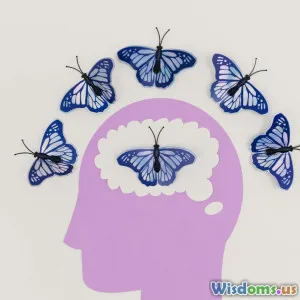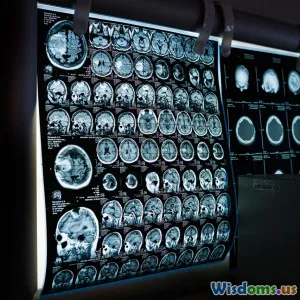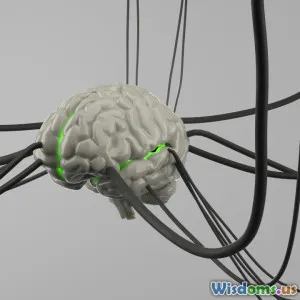
Silent Changes Your Brain Undergoes After Age Fifty
10 min read Explore the subtle, fascinating brain changes after 50 and how to stay sharp and healthy. (0 Reviews)
Silent Changes Your Brain Undergoes After Age Fifty
Introduction
Crossing the age of fifty marks an important milestone, not just in life experiences, but also in the biological changes unfolding quietly inside your brain. Unlike the dramatic transformations seen in other parts of the body, brain changes after 50 often go unnoticed — subtle alterations that can affect how you think, feel, and remember.
But what exactly happens inside the aging brain? Are all these changes negative, or is there a silver lining? More importantly, what can you do to keep your mind sharp and resilient as years tick by? This comprehensive article unpacks the science behind the silent shifts in brain structure and function that occur after fifty, supported by research and expert insights.
The Biology of Brain Aging: What Really Changes?
1. Gradual Neuronal Loss and Shrinkage
One of the most widely studied changes is a subtle loss of neurons (nerve cells) and shrinkage in certain brain regions, particularly the prefrontal cortex and hippocampus—areas essential for executive function, memory formation, and emotional regulation. Research indicates that starting around age 50, the brain can lose up to 0.5% of its volume each year, although rate and extent differ widely among individuals.
For example, a 2011 study published in Neurology by Dr. Yaakov Stern's team documented cognitive declines linked to reduced volume in specific neural circuits. However, many researchers emphasize the brain’s remarkable plasticity, meaning it can often compensate for these losses by strengthening other connections.
2. Declines in Neurotransmitter Levels
Neurotransmitters such as dopamine and serotonin decrease gradually with age. Dopamine, important for motivation and reward processing, typically declines significantly past fifty, impacting reaction times and cognitive flexibility. This shift partly explains why some middle-aged adults notice they are slower to learn new tasks or adapt to change.
A 2018 study in Nature Medicine highlighted that dopamine-related pathways showed a consistent reduction starting from middle age, correlating strongly with decreased working memory and decision-making efficiency.
3. Reduced White Matter Integrity
White matter, the brain tissue that facilitates communication between different brain areas, also degrades silently over time. This decline disrupts the speed and quality of neural signaling. Diffusion tensor imaging (DTI) studies have shown that aging adults typically experience white matter microstructural changes starting in the 50s, contributing to slower cognitive processing and reaction times.
A practical manifestation could be slower problem-solving skills or multitasking difficulties while driving or managing daily activities.
4. Changes in Functional Brain Connectivity
Functional MRI studies reveal that brain networks undergo reorganization. The default mode network (DMN), involved when the brain is at rest and linked to introspection and memory retrieval, shows altered activity patterns after 50. This rebalancing may explain shifts in how older adults focus attention and process memories.
Interestingly, some networks strengthen their connections to compensate for weaker areas, showcasing the adaptability of the aging brain.
Cognitive and Emotional Impact
Memory Subtleties: Not All Memory Is Equal
After fifty, most people notice changes in what's called episodic memory—the ability to recall specific events like a recent conversation or a date. However, semantic memory (general knowledge like facts) and procedural memory (skills like riding a bike) often remain intact for many years.
For example, a 2020 longitudinal study in Psychological Science found that while episodic memory performance declined by 15% over a decade in adults 50+, vocabulary and generalized knowledge improved or stayed stable.
Processing Speed and Attention
Processing speed—the brain’s ability to rapidly process information—declines measurably after 50. This affects tasks requiring quick mental operations, such as driving, reading, or multitasking.
Attentional control, especially selective attention (filtering distractions), can also weaken. This is partly due to declining prefrontal cortex efficiency and neurotransmitter reductions.
Emotional Regulation and Wisdom
Paradoxically, many emotional functions improve with age. Studies find that older adults regulate negative emotions better and report higher emotional satisfaction despite the physical changes in the brain. This phenomenon, known as the “positivity effect,” is partially linked to changes in amygdala responsiveness and strengthened connections to the prefrontal cortex.
Moreover, decades of life experience contribute to wisdom, an enhancing cognitive-emotional blend rarely measured in typical studies but crucial to decision making in later life.
Neuroplasticity: Aging Brain’s Hidden Strength
Neuroplasticity—the brain’s ability to reorganize through experience and learning—does not cease after 50. Scientific advances now reveal that with the right stimulation and lifestyle, the aging brain can form new connections, strengthen existing pathways, and even generate new neurons in some regions like the hippocampus.
For example, a landmark 2011 PNAS study demonstrated that adults over 60 who engaged in aerobic exercise showed increased hippocampal volume and improved memory, illustrating that brain aging is not a one-way decline but can be positively influenced.
This underscores that what you do after 50 matters profoundly to sustaining cognitive function.
Practical Strategies for Maintaining Brain Health After 50
1. Physical Exercise
Exercise is arguably the most powerful intervention. Activities such as brisk walking, swimming, or yoga increase blood flow, promote neurogenesis (growth of new neurons), and enhance neurotransmitter production.
The Centers for Disease Control and Prevention (CDC) recommends at least 150 minutes of moderate-intensity aerobic exercise weekly for adults over 50 to support brain and overall health.
2. Mental Engagement
Challenging the brain with new skills, puzzles, language learning, musical instruments, or even social interaction can enhance neuroplasticity. Lifelong learning initiatives have shown measurable cognitive benefits for older adults.
3. Healthy Nutrition
Diets rich in antioxidants, omega-3 fatty acids, and vitamins can reduce oxidative stress and inflammation—two processes implicated in accelerated brain aging. The Mediterranean diet, for instance, correlates with a lower risk of cognitive decline.
4. Sleep Hygiene
Sleep quality often worsens with age, but deep sleep is critical for memory consolidation and clearing brain metabolic waste. Prioritizing good sleep patterns can mitigate age-related cognitive decline.
5. Stress Reduction
Chronic stress negatively impacts brain health by shrinking the hippocampus and impairing neural communication. Techniques like mindfulness meditation, breathing exercises, and maintaining social connections buffer these effects.
Conclusion
The silent changes your brain undergoes after age fifty are complex, involving structural shrinkage, chemical shifts, and network reorganization. While some cognitive functions may subtly decline, others remain robust or even improve—a testament to the brain's remarkable adaptability and lifelong plasticity.
Understanding these changes is the first step toward empowering yourself. With scientifically grounded lifestyle choices—exercise, mental engagement, nutrition, sleep, and stress management—you can actively nurture your brain and embrace aging with cognitive grace and vitality.
Age fifty doesn't signal inevitable mental decline. Rather, it opens an opportunity to deepen wisdom, cultivate emotional richness, and maintain a thriving, agile mind. Your brain’s story after fifty is one of silent transformation, resilience, and potential waiting to be unlocked.
References:
- Stern, Y., et al. (2011). Neurology. Cognitive decline correlates with brain volume.
- Dang, L.C., et al. (2018). Nature Medicine. Dopamine levels and cognitive function in aging.
- Erickson, K.I., et al. (2011). PNAS. Exercise increases hippocampal volume.
- Grady, C. (2012). Trends in Cognitive Sciences. Functional brain changes with age.
- CDC Recommendations on Physical Activity for Older Adults.
- Carstensen, L.L., Mikels, J.A. (2005). Emotional experience in aging.
Embrace your brain’s evolving journey after fifty with wisdom, care, and confidence.
Rate the Post
User Reviews
Other posts in Brain Development Across the Lifespan
Popular Posts
















